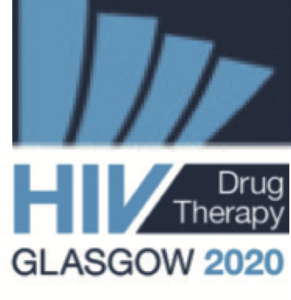Single doses of MK-8507 reduce viral load by mean –1.5 log and support once-weekly dosing above 80 mg
14 October 2020. Related: Conference reports, Antiretrovirals, HIV 15 Glasgow 2020.
First PK and virological results were presented for MK-8507, a new NNRTI that shows potential for once-weekly dosing. [1]
This was a randomised proof of concept dose-ranging study of single fasted doses (40 mg, 80 mg and 600 mg) in 18 treatment-naive participants without NNRTI resistance. All were white men with a median age of 34 years (range: 22 to 56). Entry criteria included CD4 >200 cells/mm3 and viral load >10,000 copies/mL. Median viral load was 4.6 (range: 4.0 to 5.1) log copies/mL.
The primary virological endpoints was at 168 hours (one week) when ART was started. However, several participants delayed ART: three at 600 mg started at day 14 and one at 40 mg did not start ART. PK and safety follow-up extended to 14 and 21 days respectively.
Mean (95% CI) viral load reductions at day seven were –1.53 (1.84 to –1.23), –1.50 (–1.80 to –1.19) and –1.22 (–1.52 to –0.91) in the 600 mg, 80 mg and 40 mg arms respectively.
The PK target at one week of 300 nM (based on 6 x in vitro IC50 from other NNRTI monotherapy studies) was achieved by all participants in the 600 mg arm and most in the 80 mg arm. This led to a conclusion that doses above 80 mg per week would meet this target. The mean half-life was approximately 56 to 69 hours, supporting once-weekly dosing.
Safety results were good, with only headache in 3/18 judged to be related to MK-8507. There were no significant trends in other events or laboratory results.
No viral rebound occurred in any participants who started ART at day seven. However, a single F227C NNRTI mutation was detected in one of the three participants in the 600 mg arm who delayed ART until day 14. This person also experienced viral rebound at day 14, with F227C emergent at day 10. No viral rebound was detected by day 14 in the participant from the 40 mg dose who did not restart ART. However, no longer-term follow-up information was presented for this person.
Although the presentation dismissed this case with F227C as not being clinical relevant in the context of combination ART, most drug resistance emerges in context of suboptimal adherence. This also minimises the likely resistance for this person and doesn’t comment on the implications for cross resistance to other NNRTIs.
The PK target for the 168 hour end of week trough was set at 300 nM (6 x IC50) and were met by doses above 80 mg. Further details of PK results were presented in a poster. [2]
These results support further development as a once-week treatment in dual therapy with weekly oral islatravir. This compound is in development with Merck/MSD.
References
Unless stated otherwise, references are to the Programme and Abstracts of HIV Glasgow 2020, published as a supplement to JIAS; 23(7) October 2020.
https://onlinelibrary.wiley.com/loi/17582652
- Ankram W et al. Single doses of MK-8507 a novel HIV-1 NNRTI reduced HIV viral load for at least a week. HIV Therapy Glasgow 2020, 5-8 October 2020. Oral abstract O-416.
https://vimeo.com/485456707/4e9da08e12 (webcast) - Ankram W et al. Safety, tolerability and pharmacokinetics following single- and multiple-dose administration of the novel NNRTU MK-8507 with a midazolam interaction arm. HIV Therapy Glasgow 2020, 5-8 October 2020. Poster P099.
https://vimeo.com/464498963 Poster video
https://www.hivglasgow.org/wp-content/uploads/2020/11/P099_Ankrom.pdf (PDF)
This report was first published online on 8 October 2020.


 Simon Collins, HIV i-Base
Simon Collins, HIV i-Base